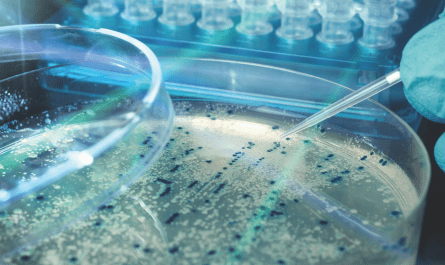
Neurofibromatosis is a genetic disorder that causes tumors to form on nerve tissues. There are three main types of neurofibromatosis – NF1, NF2, and schwannomatosis. While there is no cure for neurofibromatosis, various treatment options are available to help manage symptoms and slow disease progression. Let us take a detailed look at the current treatment drugs available for neurofibromatosis.
Types of Neurofibromatosis and their Symptoms
Neurofibromatosis type 1 (NF1) is the most common type affecting 1 in 3,000 people. It is characterized by cafe-au-lait spots on the skin and benign tumors called neurofibromas that grow along nerves. NF1 can also cause Lisch nodules in the iris, bone abnormalities, and learning disabilities.
Neurofibromatosis type 2 (NF2) develops benign tumors in the cranial nerves, spinal cord and on both auditory nerves. It causes hearing loss and balance issues. Schwannomatosis typically develops painful schwannomas (benign nerve sheath tumors) in deeper tissues rather than on peripheral nerves like NF1 and NF2. Uncontrolled growth of these tumors can compress vital structures and cause serious complications.
Drug Treatments for Neurofibromatosis Symptoms
There is no cure for neurofibromatosis. Current treatment options focus on slowing tumor growth, managing pain and other symptoms, and preventing or delaying complications. Surgery is the primary option to remove tumors, but they often grow back. Chemotherapy and radiation are usually not effective for benign nerve tumors. Here are some of the drug treatments that are used:
– Sirolimus (Rapamycin)/Everolimus: These mTOR inhibitor drugs have shown promise in shrinking neurofibromas associated with NF1. They work by blocking a protein called mTOR that helps tumors grow.
– Hydroxyurea: This chemotherapy drug may help slow the growth of inoperable plexiform neurofibromas in children with NF1. It is mostly used for tumors near vital structures.
– Prednisone: A corticosteroid, it is sometimes prescribed short-term to reduce inflammation and swelling around tumors. However, long-term use can cause unwanted side effects.
– Gabapentin/Pregabalin: These anticonvulsants help relieve chronic pain caused by tumor pressure or nerve damage. They work by decreasing abnormal nerve signals in the spinal cord and brain.
– Antidepressants/Anti-anxiety Medications: Drugs like amitriptyline, duloxetine, and selective serotonin reuptake inhibitors are used to treat associated chronic pain conditions and help improve mood in NF patients.
Managing Disease Progression with Clinical Trials
While the above drugs provide symptomatic relief, ongoing research is working on more disease-modifying treatments. Scientists are better understanding how genetics contribute to tumor growth in neurofibromatosis. This is helping identify molecular pathways and potential drug targets.
Some promising experimental therapies currently in clinical trials include MEK inhibitors, aurora kinase inhibitors, histone deacetylase inhibitors and therapies targeting the c-KIT protein. MEK inhibitors like selumetinib and trametinib work by blocking signals from the RAS-MAPK pathway, a key driver of tumor growth in NF1. Early results indicate these drugs can achieve durable responses.
Aurora kinase inhibitors target another important proliferative pathway in neurofibromas. Drugs like alisertib and danusertib are being evaluated for shrinking tumors and slowing disease progression. However, treatments are still in early stages of testing and more research is clearly needed. Combination therapies hold promise for optimizing outcomes.
Conclusion
While neurofibromatosis still has no cure, symptomatic treatments provide relief from tumor complications and improve quality of life. Ongoing clinical trials seek more effective disease-modifying drugs that can achieve meaningful and lasting control over tumor burden. Advances in genetics and molecular biology will continue yielding insights into tumorigenesis pathways specific to these conditions. With further research, optimized combination regimens may deliver breakthroughs in Neurofibromatosis management over the coming years.
*Note:
1. Source: Coherent Market Insights, Public sources, Desk research
2. We have leveraged AI tools to mine information and compile it



